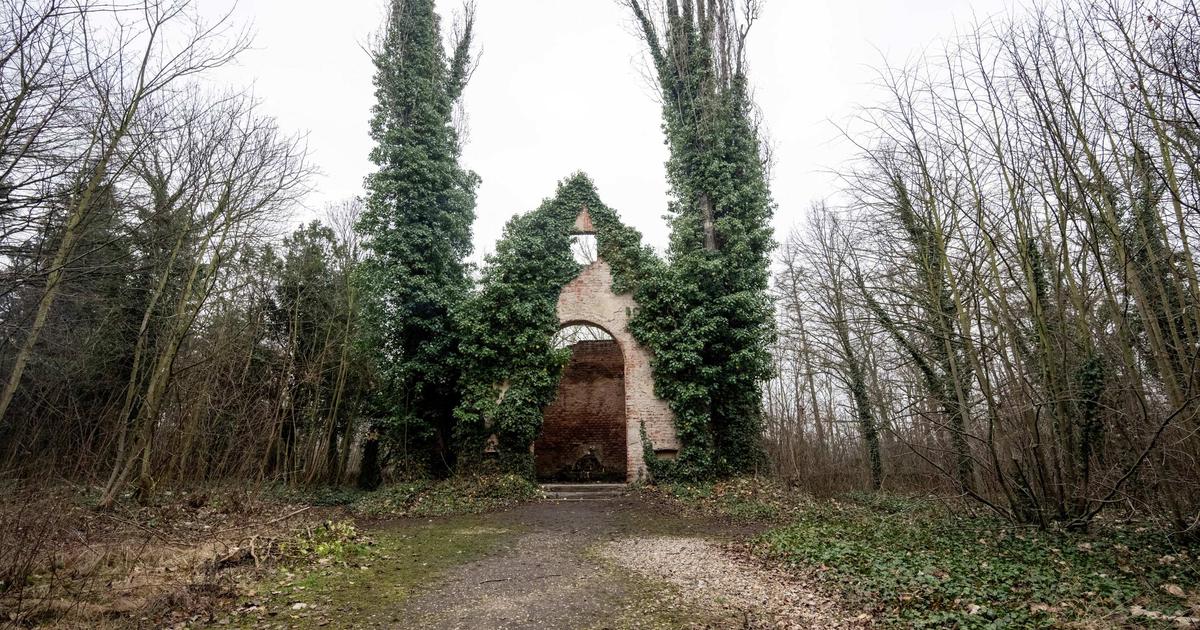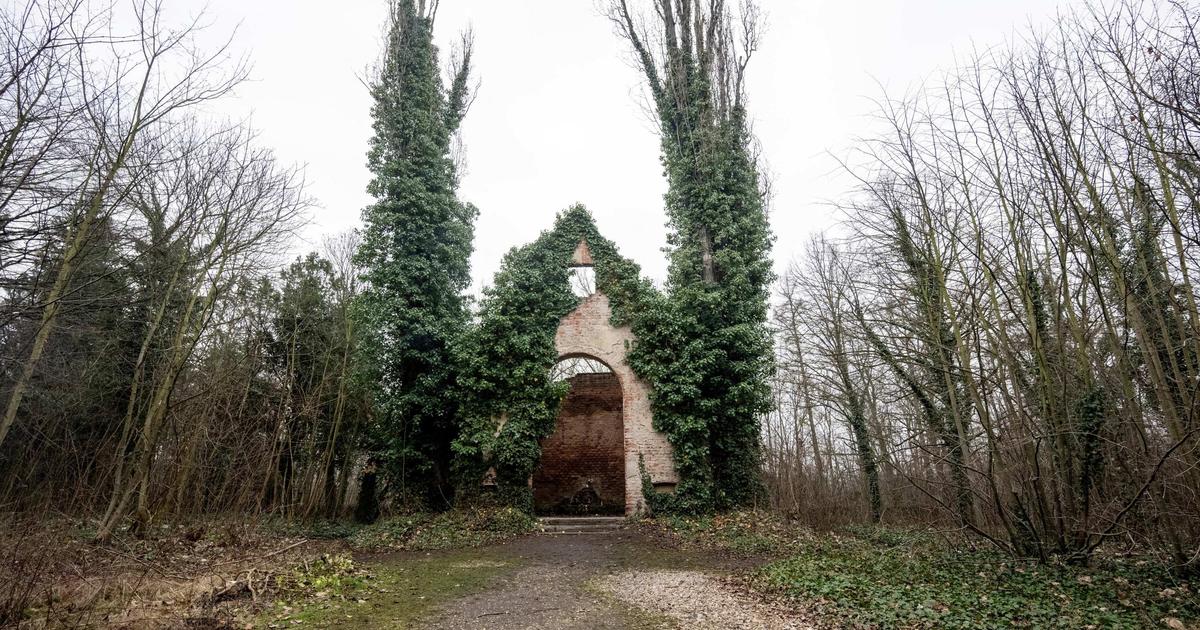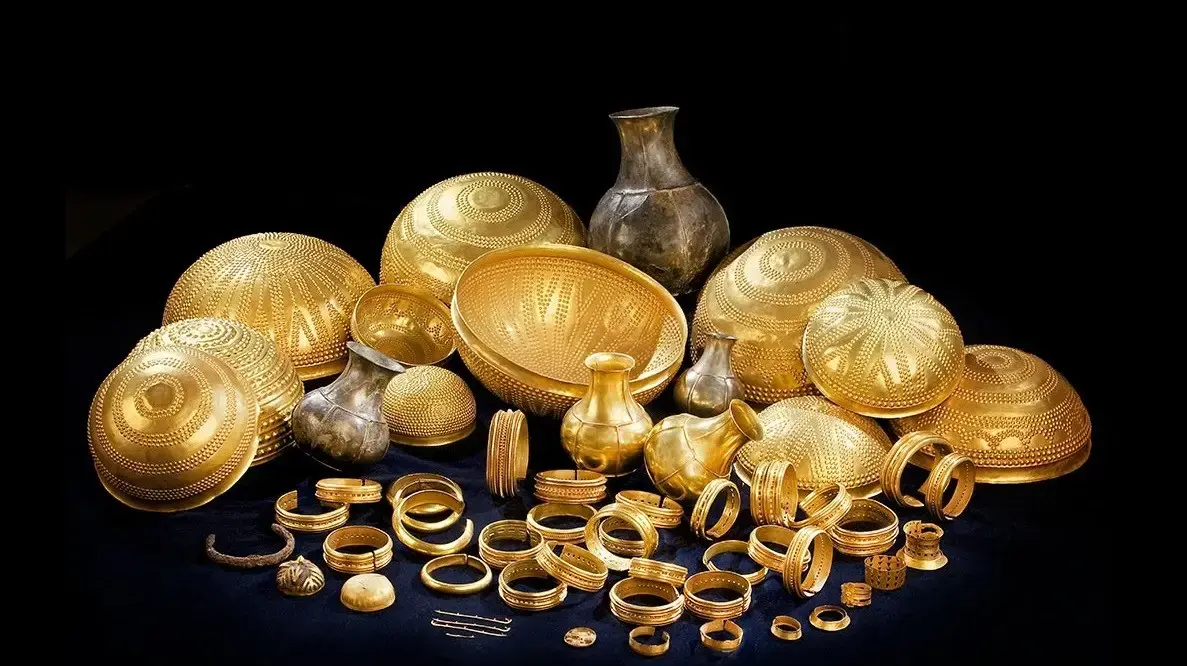A black slate dome appears behind a side wall of the
Spanish Hospital,
on La Rioja street, between Belgrano and Moreno, in Balvanera.
Excessive, she allows herself to be spied on when the gate through which the ambulances enter opens
.
It crowns an old and small chapel that bears the signature of one of the most influential architects the City had, the Norwegian
Alejandro Christophersen.
This work unknown to the vast majority is, however,
a treasure
that for years accompanied the Spanish community that was treated at the hospital.
It was, for decades, the site of prayers, requests, thanks, meditation and reunion of families, medical personnel, employees and employees.
Today
the heart of the chapel functions as a warehouse
.
The merchandise occupies all the available space.
Piles and piles of supplies are piled up in the central nave, the place where the typical prayer benches used to be located.
As said, a few meters from Christophersen's work is the entrance of ambulances and trucks of all types and sizes.
In addition,
the hospital is under construction.
In other words, around the chapel you can see
scaffolding and construction materials.
There are even some cement beams that occupy the sidewalk surrounding the chapel.
And a significant population of cats swarms in the area, they feed and also live in this patio.
The Chapel of the Spanish Hospital works today as a deposit.
Photo: Luciano Thieberger
Garbage containers are added
to all this panorama .
In the midst of all this chaos,
the deterioration and abandonment of the chapel progresses.
The dome is broken, with gaps that allow even its wooden structure to be seen.
Plants grow on different parts of the façade, a classic pathology suffered by this type of building, without the necessary care.
The original limestone tiles resist under the collection of all kinds of inputs.
And the double-leaf door, made of wood, is a sample of the quality of the materials that were used in those years.
It survives, despite everything.
The detachment of the masonry, on one of the facades.
And the perforated dome in the chapel of the Spanish Hospital.
Photo: Clarin
Christophersen's chapel is undergoing a series of contingencies that far exceed its compromised patrimonial situation.
This is a property that
is part of a bankruptcy proceeding.
According to official data linked to the case, the bankruptcy of the
Spanish Charity Society has 1,500 creditors
;
from the AFIP, to providers of medical supplies and all kinds of related activities.
The task of Justice is to try to sell all the possessions of this Society, to fairly compensate the creditors.
They also own a 14-hectare property in Temperley, where there is a home for the elderly -Elías Romero-, where there is also an important construction and a church.
Of course, this is not just another bankruptcy.
There was no chance to lower the curtain.
The activity had to continue because the hospitalized people needed to continue being assisted;
For this reason, in 2014
the Justice authorized PAMI
(the social work for retirees and pensioners) to intervene and continue with the management of the institution.
Abandoned and unattended, the chapel inside the Spanish Hospital is used as a storage room.
Photo: Luciano Thieberger.
Of course the primary concern will always be the hospital and nursing home, but the heritage and history of Christophersen Chapel must also be safeguarded.
For this reason, judicial sources agreed to explain what situation it is in.
On the one hand, the Archbishopric of the Archdiocese of Buenos Aires requested a
precautionary measure
in order to proceed with the conservation and restoration of the chapel;
He also requested the "real right of surface" on the ground, top and subsoil of the construction.
Basically because the Archbishopric understood that it was
suffering irreparable damage.
The trustee - the person who carries out the occupation, possession and administration of the assets that are part of the bankruptcy - refused to grant the "real right of surface";
but authorized the
necessary works for conservation to be carried out.
In fact, the union even warned about the possibility of
landslides.
The judge intervening in this case also granted authorization to the Archdiocese to undertake the necessary works.
On the left, an attached building, totally "supported" on one of the sides of the chapel.
Photo: Luciano Thieberger
But
nothing happened.
Everything remains the same, or worse, because the deterioration of the structure advances.
From the Archbishopric they did not respond to Clarín
's queries
.
Mario Poli, the former archbishop, resigned in December and Pope Francis has not yet named his successor.
The history of the chapel
The work was commissioned by the Spanish Charity Society to the Norwegian architect Alejandro Christophersen.
It was 1900 and the architect was already painting to become one of the most renowned architects in the country.
Throughout almost 50 years, he built buildings that became Buenos Aires icons, from the San Martín Palace (formerly Anchorena) to the Café Tortoni, the Basilica of Santa Rosa de Lima (in Belgrano and Pasco, with one of the most impressive in the City) and the Transradio rationalist-style building, located on Corrientes and San Martín, from 1940.
Detail of the clock that frames the only rationalist work that Christophersen built, the Transradio building.
Photo: Clarin
The Transradio building, by Alejandro Christophersen, on Corrientes and San Martín avenues.
Photo: Clarin
In 2018, the General Directorate of Heritage, Museums and the Historic Center of Buenos Aires carried out a survey of the building situation of the Spanish Hospital chapel: it found that oculi (the round windows found in the dome), the staircase that goes through the exterior of the dome to the lantern (the top that is on the dome) completely rusted, moisture in the foundations, walls, murals and ceilings.
Concrete beams, on the sidewalk surrounding the chapel.
Photo: Clarin
Mold everywhere, the atrium -the entrance to the chapel- used as a storage room, the same as the perimeter path.
Iron profiles of the ceiling vault, rusty;
the detached ceiling and the images -Our Lady of Mount Carmel and the Sacred Heart of Jesus- also deteriorated.
And the
stained glass windows
, located in the drum of the dome and which are mostly still preserved, have rusty supports and are without putty.
The size of the dome is out of tune with the simplicity of the basement: a double-leaf portico, framed by four fluted columns with Ionic capitals;
a painting of some kind of maintenance survives that hardly respected the original façade.
And above them, a triangular frontispiece stands out that has traces of having been profusely ornamented.
Once again the plants make their appearance everywhere.
On the facades, its growth is a clear indication that
there are breaks and cracks;
the growth of the roots and the humidity that enters through these cracks end up breaking and detaching the masonry.
Anchorena Palace, current ceremonial headquarters of the Chancellery, one of the most famous works of the architect Christophersen.
Photo: Luciano Thieberger
Returning to the intramural chapel;
for the neighbors its recovery would be very valuable.
"This construction
was always a magnet for the neighbors,
because you can spy on it from the sidewalk. Seeing how it is ruined is sad. There were times when you could enter to participate in the masses. The dome is impressive. It had a slow but permanent deterioration , that's why he came to this state,"
a neighbor from the neighborhood told
Clarín .
The members of the NGO Manzana 66 -the same ones that promoted the construction of a plaza instead of a stadium promoted by the Buenos Aires Government- also
encourage its reopening and restoration.
They propose that it can be accessed from the street, without the need to enter the hospital.
"You could enter through La Rioja, where there is a gate that today is used exclusively for hospital functions. The opening of the chapel would generate more movement of people, more visits and tourists, more security for the neighborhood," said Alberto
Aguilera
.
Another of Christophersen's great works, the Basilica of Santa Rosa de Lima, in Belgrano and Pasco.
Photo: Clarin
From Manzana 66 they want the Buenos Aires Legislature to accompany them by voting for a cultural and sports district that covers these blocks.
They see that the recovery of the chapel can be potentially interesting as a
heritage icon.
His recovery could be seen as a pipe dream, but some small steps have been taken to make it possible.
The architect Norberto José de la Torre was in charge of a restoration project that even obtained funds from the Patronage program of the Ministry of Culture of the City, $2,000,000.
By the way, it is a meager number, given two years ago, but it shows the interest that Christophersen's chapel generates.
"I think that the legal issue that this chapel is going through is more complicated than the patrimonial issue.
We asked that this asset be removed from that bankruptcy in some way, but the judge explained to us that it was impossible,"
explained De la Torre.
A student of Christophersen's work, the architect understands that the first thing that should be done is to protect the dome in some way that prevents the entry of rainwater.
The original building of the Spanish Hospital, by the architect Julián García Núñez, on the corner of Belgrano and Dean Funes.
With characteristics of the Catalan modernism style.
De la Torre explains that it would also be necessary to "detach" a building that is attached to it -which was built many years after the chapel- and that evidence that it was never fully valued.
Without this attached building, it could be seen from the street with a better perspective.
One of the portals that has followed the heritage of the chapel for many years is BAIglesias.com.
Its creator, Miguel Cabrera, got to know the chapel from the inside and told Clarín
:
"What I felt was sorrow. Because beyond the religion and beliefs of each one,
this site has a patrimonial value that must be protected.
When I went in and saw the state she was in, I felt that the chapel was asking us to help her," he said excitedly.
In general, heritage challenges organizations, states and their owners.
How to preserve, care for and protect a valuable asset due to its history, but which also requires a significant investment.
The context is also a bankrupt company.
The state of Christophersen's chapel challenges all the people and institutions that must ensure its existence.
SC
look also
Unexpected controversy over some land between the UBA and the Buenos Aires government
The park that waited 30 years: what the public space will be like in the former Ciudad Deportiva de Boca









